Among the many applications of metal materials,
stainless steel pipes are widely used in industries such as construction, machinery manufacturing, chemicals, and the food industry due to their excellent corrosion resistance, high strength, and attractive appearance. However, one crucial step in the stainless steel pipe production process is often mentioned: annealing. This leads us to wonder: why is annealing necessary for stainless steel pipes?
After initial rolling or cold working, the internal microstructure of stainless steel pipes undergoes significant changes. The cold working process causes the grains in the stainless steel pipe to deform and fracture, significantly increasing the dislocation density. This microstructural change directly leads to changes in material properties, increasing the hardness and strength of the stainless steel pipe while significantly reducing its plasticity and toughness. Imagine the stainless steel pipe at this point as an overstretched spring: while seemingly rigid, it is easily broken by a significant external force.
One of the functions of the annealing process is to eliminate this work-hardening phenomenon. By heating the stainless steel pipe to a specific temperature range, holding it for a period of time, and then slowly cooling it, the atoms within the metal gain sufficient energy to rearrange themselves. The previously broken and deformed grains are restored to a near-original equiaxed state, reducing dislocation density. This results in a moderate reduction in the hardness and strength of the stainless steel pipe, while significantly improving its plasticity and toughness. The annealed stainless steel pipe is like a recalibrated spring, maintaining a certain strength while also possessing excellent flexibility, making it more adaptable to various subsequent processing and usage requirements.
From a stress relief perspective, the uneven deformation of stainless steel pipes during cold working generates significant residual stresses within the material. These residual stresses act like hidden "time bombs" within the material, not only reducing the dimensional accuracy and stability of the stainless steel pipe but also potentially causing stress corrosion and other problems during subsequent use. The annealing process acts as an internal reconciliation. During the heating and holding processes, these residual stresses are gradually released and balanced, making the internal structure of the stainless steel pipe more stable, reducing the risk of cracking or other failures caused by stress concentration, and significantly extending the service life of the stainless steel pipe.
The annealing process is also crucial for improving the corrosion resistance of stainless steel pipes. Stainless steel's excellent corrosion resistance is primarily due to the dense protective chromium oxide film formed on its surface. However, during cold working, this protective film may be damaged, resulting in a decrease in corrosion resistance in certain areas. Annealing can make the chemical composition and microstructure of stainless steel pipes more uniform, promoting the re-formation of a new, complete chromium oxide protective film, thereby restoring and enhancing their corrosion resistance. This is crucial for stainless steel pipes used in harsh environments, such as offshore engineering and chemical pipelines.
Annealing also optimizes the machinability of stainless steel pipes. In many applications, stainless steel pipes may require further processing, such as cutting, welding, and bending. If the material's hardness is too high and its plasticity too low, these processes become difficult, increasing processing costs and potentially compromising quality. Annealed stainless steel pipes, due to their excellent plasticity and moderate hardness, are more easily processed, ensuring surface quality and precision, and improving production efficiency.
The annealing process for stainless steel pipes is not a simple, optional step; it plays a critical role in the entire production process. By adjusting and optimizing the material's microstructure, eliminating work hardening and residual stresses, and improving corrosion resistance and machinability, it lays a solid foundation for the safe and reliable application of stainless steel pipes in various fields. Whether supporting the sturdy framework of high-rise construction, transporting various media in complex chemical processes, or serving as an aesthetically pleasing and durable product in daily life, stainless steel pipes that have undergone annealing demonstrate irreplaceable value with their superior performance.
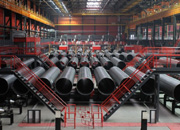 Threeway Steel is known as a professional supplier engaged in manufacturing and distributing a wide range of steel pipe, and our headquarter located the central part of China – Hunan and six associated factories throughout China.
Threeway Steel is known as a professional supplier engaged in manufacturing and distributing a wide range of steel pipe, and our headquarter located the central part of China – Hunan and six associated factories throughout China.
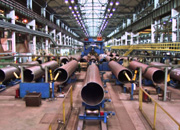 Threeway Steel is known as a professional supplier engaged in designing, manufacturing and distribution of a wide range of steel products with the headquarter located the central part of China – Hunan and six associated factories throughout China.
Threeway Steel is known as a professional supplier engaged in designing, manufacturing and distribution of a wide range of steel products with the headquarter located the central part of China – Hunan and six associated factories throughout China.
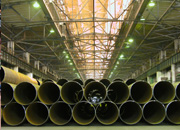 Threeway Steel is known as a professional supplier engaged in designing, manufacturing and distribution of a wide range of steel products with the headquarter located the central part of China – Hunan and six associated factories throughout China.
Threeway Steel is known as a professional supplier engaged in designing, manufacturing and distribution of a wide range of steel products with the headquarter located the central part of China – Hunan and six associated factories throughout China.
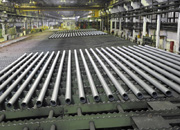 Threeway Steel is known as a professional supplier engaged in designing, manufacturing and distribution of a wide range of steel products with the headquarter located the central part of China – Hunan and six associated factories throughout China.
Threeway Steel is known as a professional supplier engaged in designing, manufacturing and distribution of a wide range of steel products with the headquarter located the central part of China – Hunan and six associated factories throughout China.
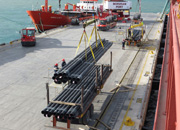 Threeway Steel is known as a professional supplier engaged in designing, manufacturing and distribution of a wide range of steel products with the headquarter located the central part of China – Hunan and six associated factories throughout China.
Threeway Steel is known as a professional supplier engaged in designing, manufacturing and distribution of a wide range of steel products with the headquarter located the central part of China – Hunan and six associated factories throughout China.

